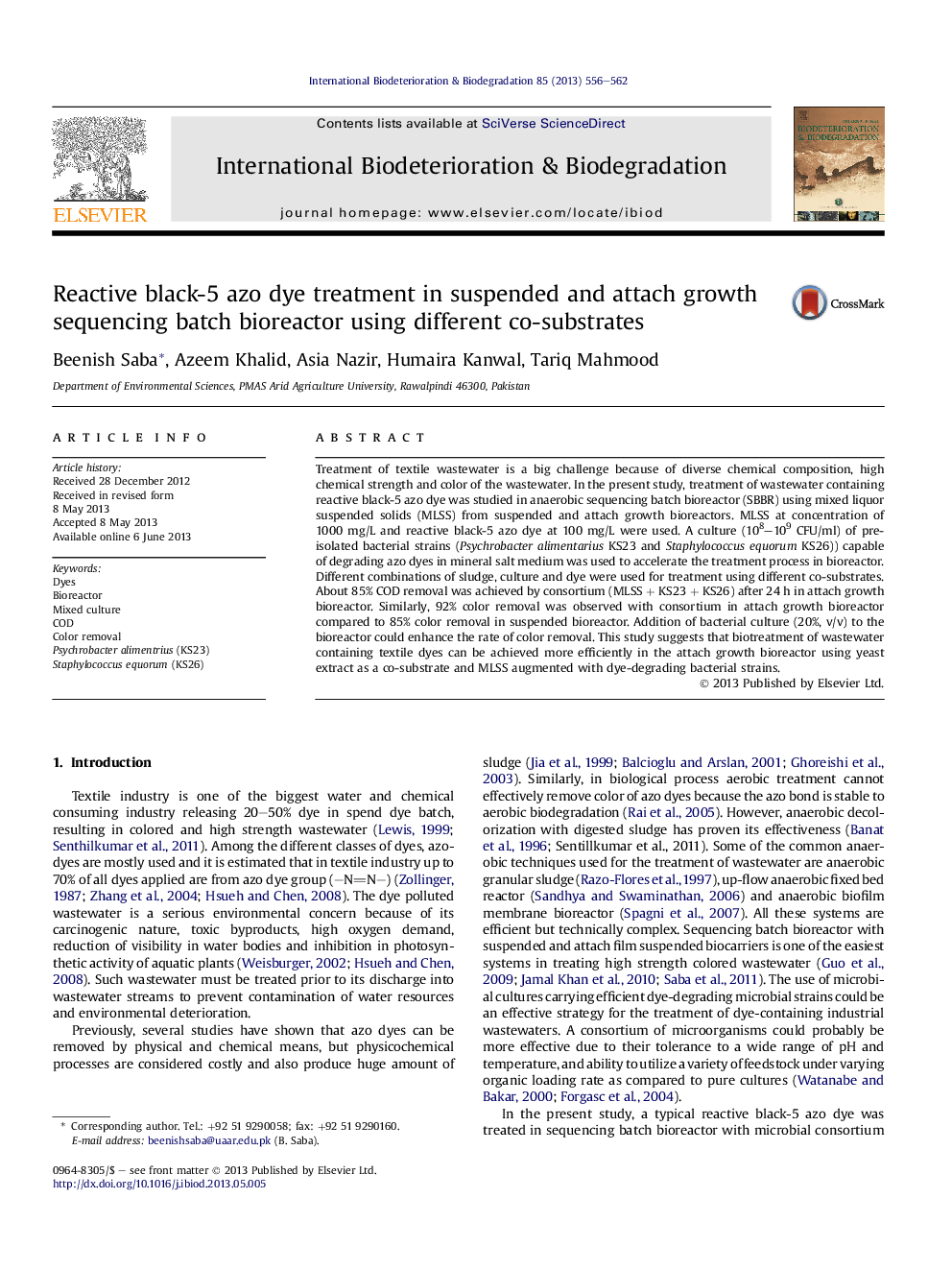| Article ID | Journal | Published Year | Pages | File Type |
|---|---|---|---|---|
| 6289368 | International Biodeterioration & Biodegradation | 2013 | 7 Pages |
Abstract
Treatment of textile wastewater is a big challenge because of diverse chemical composition, high chemical strength and color of the wastewater. In the present study, treatment of wastewater containing reactive black-5 azo dye was studied in anaerobic sequencing batch bioreactor (SBBR) using mixed liquor suspended solids (MLSS) from suspended and attach growth bioreactors. MLSS at concentration of 1000Â mg/L and reactive black-5 azo dye at 100Â mg/L were used. A culture (108-109Â CFU/ml) of pre-isolated bacterial strains (Psychrobacter alimentarius KS23 and Staphylococcus equorum KS26)) capable of degrading azo dyes in mineral salt medium was used to accelerate the treatment process in bioreactor. Different combinations of sludge, culture and dye were used for treatment using different co-substrates. About 85% COD removal was achieved by consortium (MLSSÂ +Â KS23Â +Â KS26) after 24Â h in attach growth bioreactor. Similarly, 92% color removal was observed with consortium in attach growth bioreactor compared to 85% color removal in suspended bioreactor. Addition of bacterial culture (20%, v/v) to the bioreactor could enhance the rate of color removal. This study suggests that biotreatment of wastewater containing textile dyes can be achieved more efficiently in the attach growth bioreactor using yeast extract as a co-substrate and MLSS augmented with dye-degrading bacterial strains.
Related Topics
Life Sciences
Environmental Science
Environmental Science (General)
Authors
Beenish Saba, Azeem Khalid, Asia Nazir, Humaira Kanwal, Tariq Mahmood,
